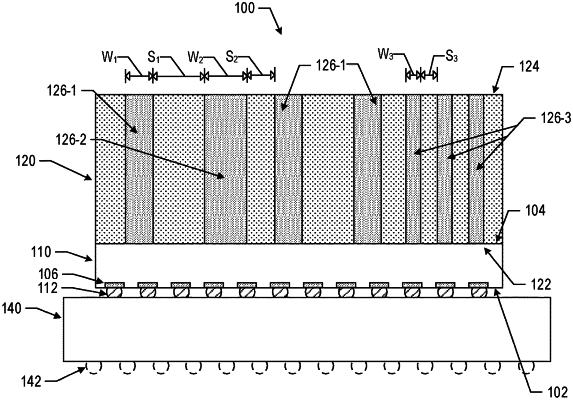| CPC H01L 23/645 (2013.01) [H01L 23/34 (2013.01); H01L 23/66 (2013.01); H01L 28/10 (2013.01); H01L 2223/6677 (2013.01)] | 11 Claims |

|
1. A method of manufacturing a microelectronic assembly, comprising:
attaching a thermal layer to a back side of a die, wherein the thermal layer comprises a material and a plurality of conductive pathways through the material extending from a front side of the thermal layer to a back side of the thermal layer, and wherein the plurality of conductive pathways include first conductive pathways having a first pitch and second conductive pathways having a second pitch different from the first pitch; and
coupling at least one conductive pathways of the plurality of conductive pathways to the back side of the die by a metal-to-metal interconnect, by a solder interconnect, or by an anisotropic conductive material.
|